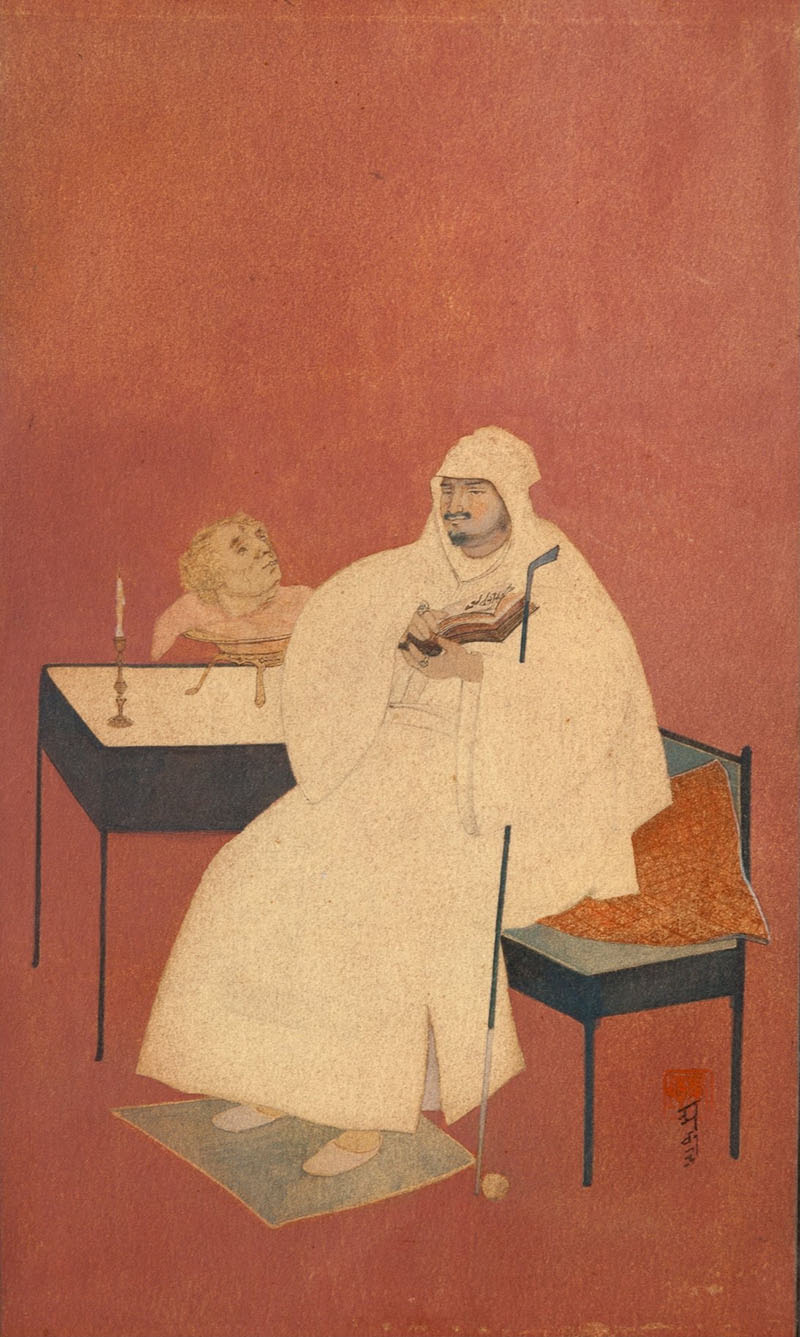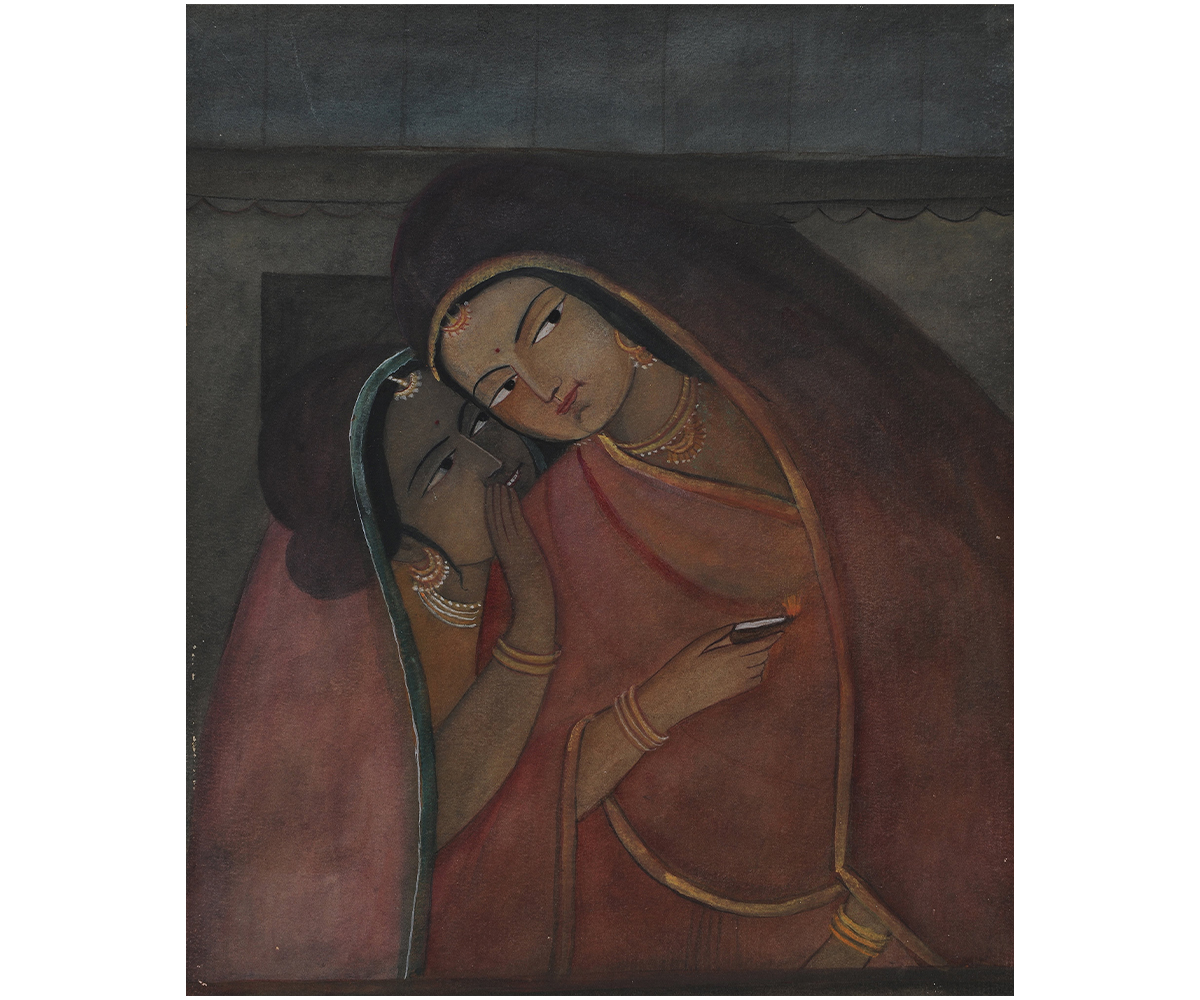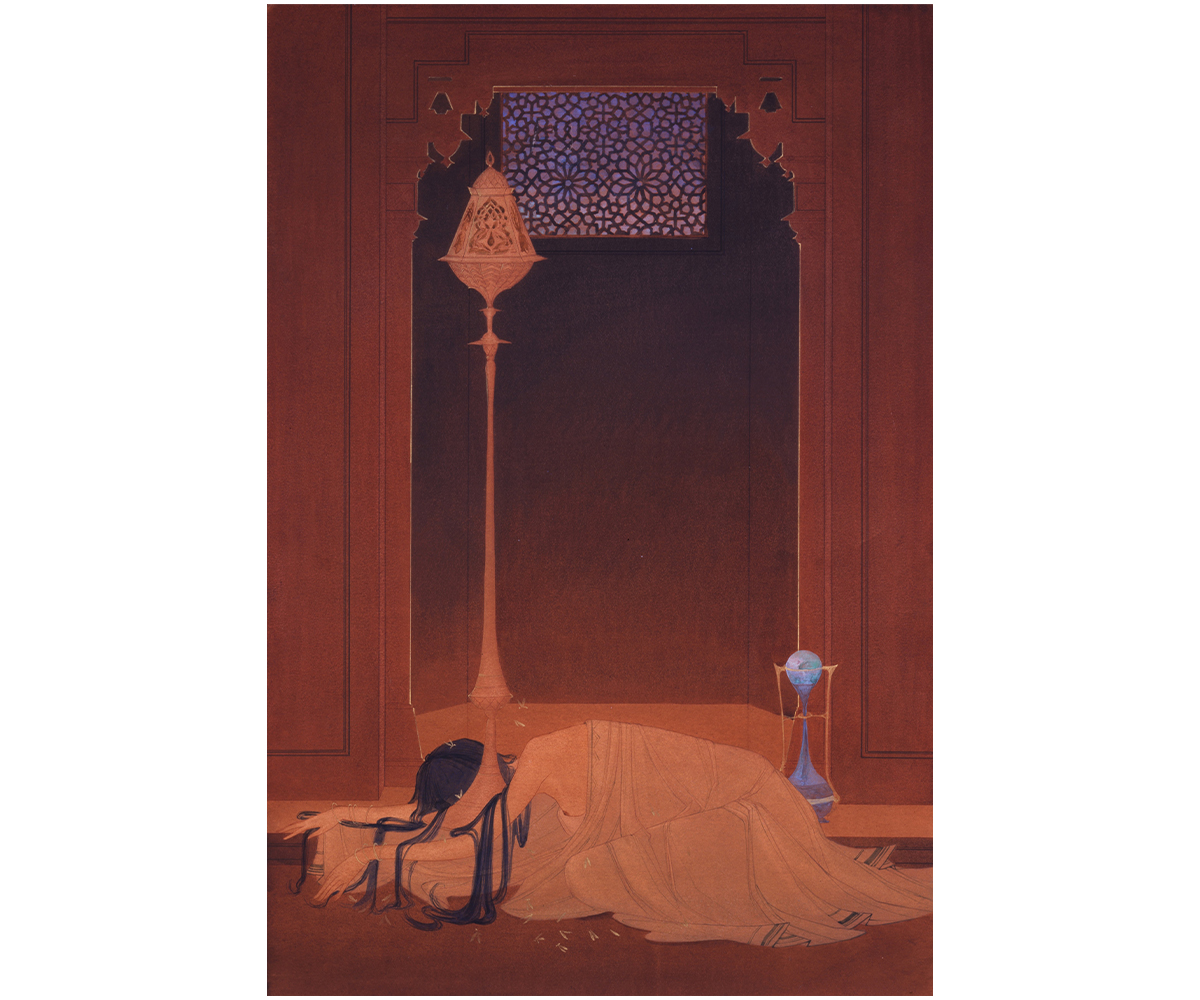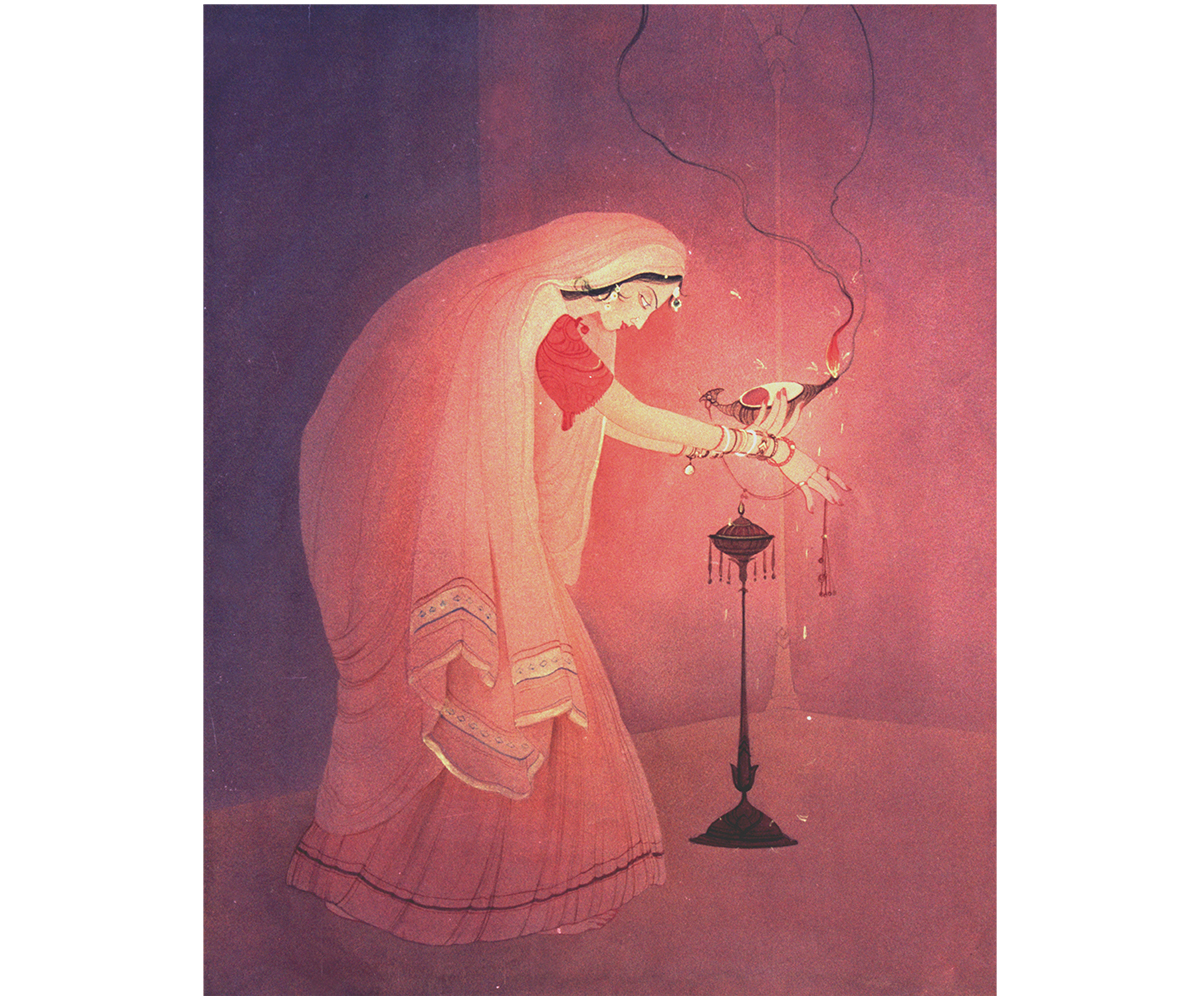ARTICLE
Bengal School
As the principal of the Government College of Art and Craft between 1896 and 1905, Havell encouraged the study of decorative arts in the handicrafts traditions of India, as well as the visual vocabulary of Mughal miniatures, in an attempt to elevate the values of Indian spiritualism over Western industrialism and materialism. However, this notion of spiritual contrast, which steered him towards the codified traditions of the Vedas and other Hindu scriptures, resulted in his problematic conflation of Indian nationality with Hinduism. This approach of valourising an idealised Indian past was criticised and denounced for subverting the emerging nationalist movement in the subcontinent. Whatever the criticisms that may have arisen, Havell is responsible for laying the pedagogical foundations of the Bengal School by ushering in curricular changes and shaping revolutionary thinkers and new visual idioms.
Its influence can also be attributed to the proliferation of the journals Probashi and The Modern Review, which promoted painting from India. Several of Abanindranath Tagore’s students were also instrumental in disseminating the values and methodologies of the Bengal School across the nation through their contributions to both art and academia. As such, it gradually created a space for modern art in India outside Western academic institutions and brought with it a culture of art journals, critics, art salons and a new art-consuming middle class that espoused its revivalistic thrust as a product of and a response to the dominant colonial forces.
By the 1920s, the influence of the Bengal School began to wane. The painters associated with it introduced little to no alterations to their style and soon began facing the same problems as the traditions to which they were responding. Further, the establishment of Kala Bhavana at Shantiniketan (in erstwhile Bengal) under Rabindranth Tagore brought with it different ideals and conceptions of both art and the nation. Nandalal Bose’s appointment at Kala Bhavana in 1922, following his exit from the Indian Society of Oriental Art, marked a final and decisive break from the Bengal School’s dual approach and its mission of formulating universal standards of ‘Indianness.’ The legacy of the Bengal School, in terms of its aesthetic and technical contributions, if not its ideological foundations, still lives on in the Government College of Art and in Kala Bhavana.
Bibliography
Our website is currently undergoing maintenance and re-design, due to which we have had to take down some of our bibliographies. While these will be re-published shortly, you can request references for specific articles by writing to hellomapacademy@map-india.org.













